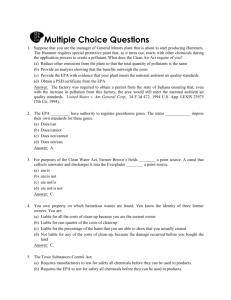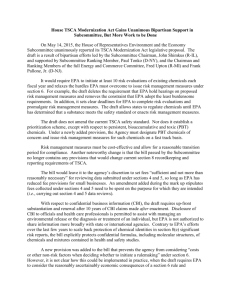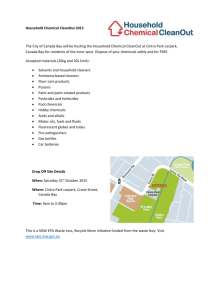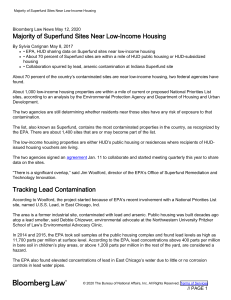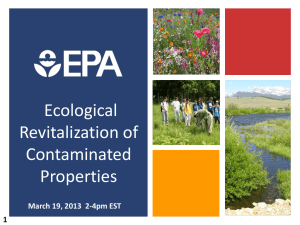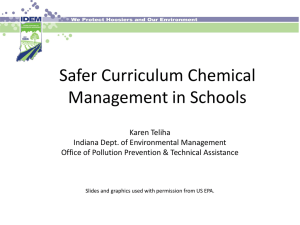hazard_substance - Cal State LA
advertisement
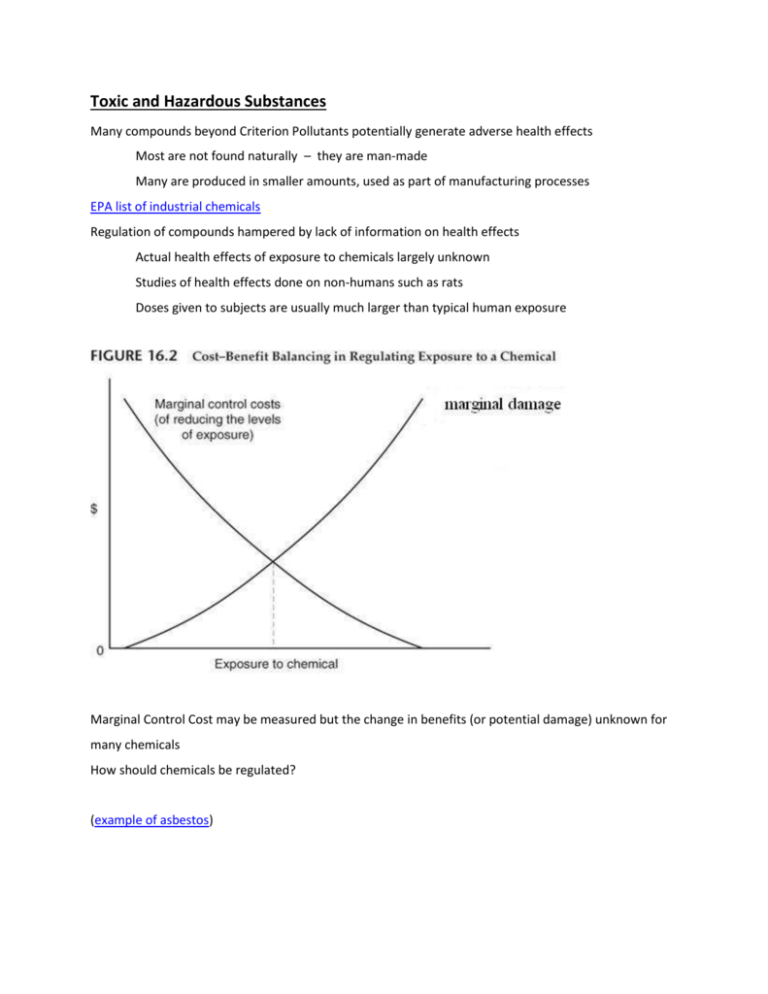
Toxic and Hazardous Substances Many compounds beyond Criterion Pollutants potentially generate adverse health effects Most are not found naturally – they are man-made Many are produced in smaller amounts, used as part of manufacturing processes EPA list of industrial chemicals Regulation of compounds hampered by lack of information on health effects Actual health effects of exposure to chemicals largely unknown Studies of health effects done on non-humans such as rats Doses given to subjects are usually much larger than typical human exposure Marginal Control Cost may be measured but the change in benefits (or potential damage) unknown for many chemicals How should chemicals be regulated? (example of asbestos) Most legislation provides broad language on how to regulate compounds Should we eliminate all human exposure/risk of a pollutant? Decrease exposure? Language included in many acts implies balancing of costs/benefits Quote from text: Under the Food, Drug and Cosmetic Act (FDCA), the EPA must establish tolerances for the maximum amount of pesticide residues permitted in or on food and feed. In setting these tolerances the legal criterion is that the EPA must have a “reasonable certainty of no harm.” Legislation exists largely because of information problem If people are fully informed on levels and effects of chemicals, markets could possibly address problem Suppose workplace presents risk to workers of exposure to harmful chemicals or equipment (for example Simpson Tower has asbestos and faulty elevators) Marginal cost of reducing risk of exposure will vary by workplace The workplace in which it is more costly to decrease risk has MC1 Efficient amount risk varies by workplace With perfect information, labor market could account for this Wage in higher risk workplace should be higher Workers choose jobs with different amounts of risk in which greater risk compensated for by higher pay Employers would have incentive to reduce health risk because this would decrease their wage costs Scenario assumes no inefficiencies in labor market and complete information regarding risk Housing market can also be used in analysis Federal Government has attempted to increase information on Chemical exposure In 1986, the Emergency Planning and Community Right-to-Know Act was passed Requires all facilities that use chemicals at levels above a given threshold to report their emissions to the EPA EPA publishes data in the Toxic Release Inventory (TRI) People can observe what chemicals (local) firms are emitting http://iaspub.epa.gov/triexplorer/tri_release.facility Superfund Sites Environmental problems associated with abandoned industrial sites Became apparent with Love Canal Incident led to Comprehensive Environmental Response, Compensation and Liability Act of 1980 EPA charged with cleaning abandoned industrial sites that are environmental hazards Called Superfund sites Community and Environmental groups propose sites as superfund EPA evaluates sites and follow criteria determining qualification Number of existing and completed sites: http://www.epa.gov/superfund/sites/npl/ Superfund Sites in Los Angeles County http://www.epa.gov/superfund/sites/index.htm Asbestos was first used as a form of insulation in US in 1850’s 50 years later people first noticed increased lung cancer deaths in asbestos mining towns Asbetos continued to be used in such products as car brake pads until recently Area in New York State that in 1940’s-50’s served as dumping ground for chemical wastes Housing later constructed in the area Area later found to be hazardous; waste was seen oozing from ground The areas 900 residents were relocated

